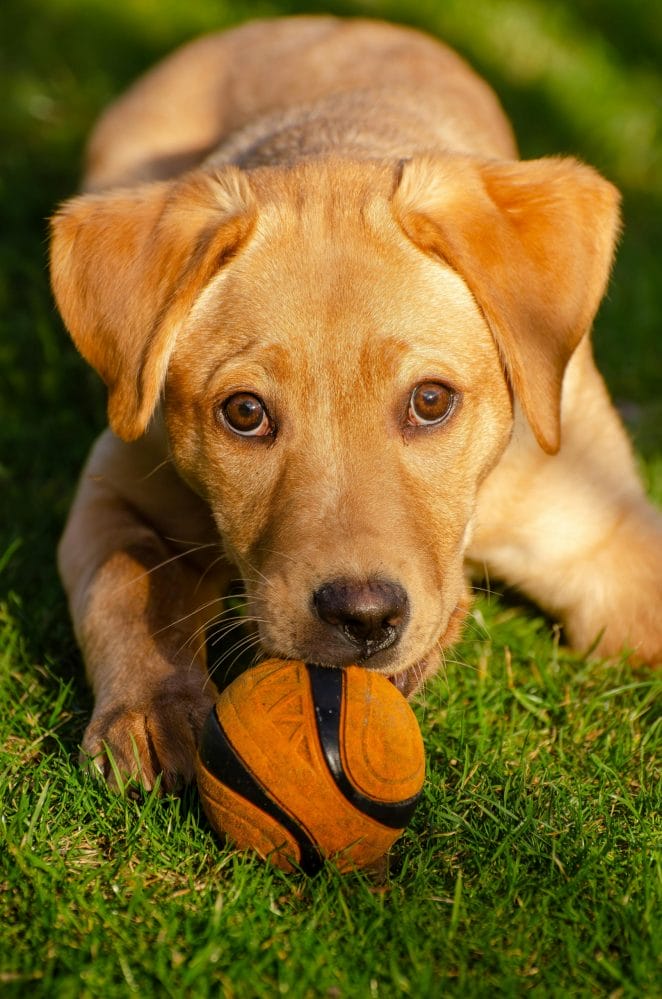
Labrador Retriever Puppy Care Tips are required.
Welcoming a new Labrador puppy into your life marks a truly special occasion. However, it can also bring about a sense of overwhelm.
The commitment required to care for a Labrador puppy is akin to that of caring for a human child.
Did you know?
There’s a special Labrador Retriever Appreciation Day Celebrated worldwide.
Nevertheless, the effort invested yields immense rewards.
Labradors are beloved not only by families but also by various professions where they serve as search and rescue or support dogs.
Their popularity as family pets in America is unparalleled, owing to their warm and friendly demeanour.
With their adaptable nature, Labradors thrive in diverse roles, whether as hunting companions, service animals, or cherished members of the family.
History of Labrador Retrievers

The origins of the Labrador retriever breed trace back to the Canadian province of Newfoundland, rather than the region of Labrador itself.
In the 16th century, Newfoundland was renowned for its bustling fishing industry, serving as a hub for trade between England and Canada.
During this time, dogs played a vital role in assisting fishermen by retrieving nets and lost lines, as well as hauling carts filled with fish.
Initially known as St. John’s dogs, the predecessors of today’s Labradors were smaller in size.
These dogs were a result of crossbreeding between local Newfoundland dogs and hunting dogs brought over by English traders and fishermen.
Following selective breeding, these dogs were transported back to England due to their exceptional retrieving abilities, laying the foundation for the Labrador breed we recognize today.
The breed gained recognition and patronage, particularly from the Earl of Malmesbury, who bestowed upon them the name Labrador retriever, acknowledging their origins and their remarkable retrieving skills.
Characteristics of Labrador Retrievers
Physical attributes
Labradors typically stand between 21.5 to 24.5 inches tall at the shoulder, depending on their gender, and weigh between 55 to 88 pounds.
With their wide heads and sturdy jaws, they boast a medium to large build, supported by strong legs and shoulders that facilitate their impressive speed.
A defining feature is their thick, rounded tail, often likened to that of an otter.
Their coat, which comes in yellow, black, and chocolate brown, is short, straight, and dense.
This double-layered coat consists of a coarse outer layer and a soft, insulating undercoat, providing them with excellent waterproofing.
Despite their robust physique, Labradors carry themselves with an upright, proud posture that complements their friendly and approachable facial expression.
With an average lifespan of 10 to 14 years, Labradors make enduring companions, blending strength and agility with a gentle and inviting demeanour.
Labrador personalities
Labradors are renowned for their friendly and sociable nature.
They possess a natural warmth and are quick to show affection not only to their family but also to strangers, readily making new friends wherever they go.
Their exuberant energy levels ensure they’re always eager to engage in play and activities, yet they also exhibit remarkable adaptability, effortlessly transitioning between various roles and environments.
Their inherent friendliness and outgoing personality make them ideal candidates for roles such as guide dogs, rescue dogs, and therapy dogs, where their gentle demeanor and willingness to connect with people shine.
However, their inherently trusting nature and tendency to greet everyone with enthusiasm make them less suitable for guard dog duties
Labrador Retriever Puppy Care Tips

House Training a Lab Puppy
House training or potty-training small Labrador puppies can sometimes be a challenging experience for pet owners.
However, there’s no need to worry! There are effective methods to teach your puppy the appropriate behavior and habits.
It’s important to understand that when young Labs relieve themselves indoors, it’s not a sign of disobedience.
Rather, they may simply forget to control their bladder or bowel movements. This is why consistent guidance is essential.
Leading them outdoors regularly, especially in the initial stages, helps reinforce the idea of where they should go to relieve themselves and prevents potential accidents indoors.
Exercise
When considering your dog’s exercise needs, it’s important to strike a balance between keeping them active and avoiding overexertion, especially for puppies.
While it’s tempting to indulge them in vigorous activities like fetch or tug-of-war, it’s crucial to recognize their limits and prevent potential strain or injury.
Breeds like Labradors, historically used as hunting companions, have a natural inclination towards physical activity.
As your Lab matures, you may notice their affinity for water and swimming, reflecting their breed’s inherent strengths.
As they grow older and become house trained while receiving all their vaccinations, you can gradually introduce more stimulating activities like walks, light jogs, or even runs to accommodate their increasing energy levels and need for mental stimulation.
Socialize Your Lab Puppy
Understanding the distinction between socialization and training is key when raising a puppy.
While training focuses on teaching specific behaviours and commands, socialization is about introducing your puppy to various experiences and environments to help them develop into well-adjusted adults.
Early socialization plays a crucial role in shaping your puppy’s temperament and ensuring they grow into friendly and confident dogs.
By exposing them to different people, animals, sounds, and environments during their critical developmental stages, you help them become comfortable and adaptable in a variety of situations they may encounter later in life.
Furthermore, many celebrities have also owned Labradors and given unique names to them.
Home Preparation
Preparing to welcome a Labrador puppy into your home is akin to preparing for a new addition to the family.
Ensuring a safe and comfortable environment for your furry friend is essential for a smooth transition.
Before your puppy’s arrival, take proactive steps to eliminate potential hazards from your living space.
Secure any medications, toiletries, cleaning supplies, and small items that could pose a risk to your curious pup. Consider installing baby gates to restrict access to certain areas of your home.
Be sure to have essentials such as fresh water and high-quality puppy food readily available upon your Lab’s arrival.
Consult with your veterinarian to select a suitable diet that meets your nutritional needs. Additionally, equip yourself with grooming tools to manage their shedding, as Labrador Retrievers typically require regular brushing.
Nutrition and Health Care

Labradors have a well-known penchant for food and are susceptible to obesity if their diet isn’t carefully managed. To ensure their nutritional needs are met and maintain a healthy weight:
- Opt for a high-quality dog food specifically formulated for Labradors, taking into account factors such as their age, size, and activity level.
Look for options that provide balanced nutrition and avoid fillers or excessive additives. - Adhere to the feeding guidelines provided on the dog food packaging, but be prepared to adjust portion sizes based on your Labrador’s individual metabolism and energy expenditure.
- Some Labs may require more or fewer calories depending on their activity level and overall health.
- Be mindful of treats and snacks, as these can contribute significantly to calorie intake. Use them sparingly and consider incorporating healthier alternatives such as fruits or vegetables.
- Remember to factor treats into your Labrador’s daily calorie allowance to prevent overfeeding.
- Regularly monitor your Labrador’s weight and body condition, making adjustments to their diet as necessary to maintain a healthy body composition. Consult with your veterinarian for guidance on appropriate feeding practices and dietary management tailored to your Labrador’s specific needs.
- By taking a proactive approach to nutrition and portion control, you can help your Labrador stay healthy, happy, and at an ideal weight.
Labrador Retriever Puppy Care Tips– Grooming Guide
Labrador Retrievers boast a relatively low-maintenance grooming routine, but managing their shedding and attending to specific care needs is essential for their overall health and comfort.
Skin Care
While Labrador Retrievers generally don’t require specialized skin care, it’s crucial to ensure they are thoroughly dried after swimming or baths to prevent skin issues.
Coat Care
Labradors sport a dense double coat designed to repel water, consisting of a short undercoat and longer outer hair.
This double layer contributes to their significant shedding, necessitating regular brushing to manage loose hair.
Occasional baths help maintain cleanliness and promote a healthy coat.
Eye Care
Labradors may exhibit a mild amount of clear or brown eye discharge, which is normal.
Using a moistened washcloth to gently clean away discharge as needed can help keep their eyes clean and comfortable.
Ear Care
Due to their floppy ears and love for swimming, Labradors are prone to ear infections.
Regular ear cleaning every two to three weeks, as well as after baths and swimming, is recommended using an ear cleaner containing a drying agent.
This helps minimise the risk of moisture-related ear infections and ensures optimal ear health.
Final Thoughts
Ensuring the well-being of your Labrador Retriever Puppy Care Tips goes beyond simply bringing them home—it involves understanding and implementing proper care practices every step of the way.
In this comprehensive guide, we provided invaluable insights covering the entire journey, from the initial moment you receive your puppy to ongoing care once they’re settled into their new home.
From the moment your puppy enters your life, you’ll learn how to provide essential care, including feeding, grooming, and training. We’ll cover important topics such as socialization, house training, and healthcare needs, equipping you with the knowledge and tools necessary to nurture a strong bond with your furry companion.
Labrador Retriever Puppy Care Tips: Frequently Asked Questions
Absolutely! Labrador Retrievers excel as family pets due to their affectionate nature, patience, and ability to get along well with children and other dogs.
Indeed, Labrador Retrievers rank high in intelligence, making them a breeze to train. They thrive on pleasing their owners and quickly grasp various commands and tricks in exchange for praise and treats.
It’s essential to provide your Labrador with a cooler environment, such as air conditioning, during hot weather. Regular baths and keeping them indoors during the daytime are also crucial. Essentially, ensure they have all the comforts necessary to beat the heat.
Like many other breeds, Labradors can struggle in the heat, especially during summer. To keep them comfortable, aim for temperatures below 90 degrees Fahrenheit and humidity levels of 20-30%. Always keep them hydrated and vigilant for any signs of heatstroke
Labradors typically fall into the category of moderate barkers and aren’t known for incessant barking.


GIPHY App Key not set. Please check settings